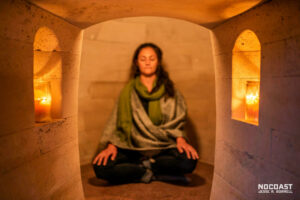“Teachers devise their own tests, to inform them about their students’ progress and needs. They do their best because it is their professional responsibility. Like other professionals, as Pasi Sahlberg shows in his book, Finnish Lessons, Finnish teachers are driven by a sense of intrinsic motivation, not by the hope of a bonus or the fear of being fired. Intrinsic motivation is also what they seek to instill in their students. In the absence of standardized testing by which to compare their students and their schools, teachers must develop, appeal to, and rely on their students’ interest in learning.”
–From Diane Ravtich’s article titled “How, and How Not, to Improve the Schools,” in The New York Review of Books, March 22, 2012
Yes, that’s what I do in my classrooms, devise my own tests that help children probe their inside worlds to discover the creativity, self-motivation, and emotional intelligence needed for learning and living. Aren’t these areas worth studying today in our test-obsessed and bullying culture?
My project started with music to calm the nerves of students returning to class from lunch. I played Billy Joel songs, not the favorites of Latino and African-American kids, but I liked to listen, and if anything, it relaxed me, and eventually the class. How sweet it felt, until I amped up the academics, because music to soothe the soul would not be enough for supervisors walking in the room and wondering what the aim of the lesson was.
So I asked the children to put their heads down on the desks, close their eyes, and write about whatever they experienced inside themselves while the music played. When the tunes stopped, I asked them to take a few seconds to reflect before they wrote about what happened internally. Many things can spin around the mind and imagination in an instant. I wanted them to pause, contemplate, and recall these creative, surreal, absurd, wild, and sometimes, sane inner worlds.
The Contemplation Writing Project began in 1975 and ran until 2002. It uses an original, innovative, and progressive form of writing called, Contemplation Music Writing, to develop intra- and interpersonal communication skills (EI/SEL), creative self-expression, therapeutic writing, poetry, thinking, character education, identity, and values clarification in young people through music, contemplation, writing, discussion, and self-assessments.
The project is easy to implement from elementary school (from grade 2) through secondary in public, charter, private, parochial, and alternative schools, including before/after school programs, as well as correctional facilities.
Start with the “Counting Technique” to introduce inner experience: “I want you to close your eyes and silently count backwards—by 1’s—from 50 to 1. Take your time and don’t rush. When you finish, open your eyes and write whatever happened inside yourself while counting. There are no right or wrong answers in the assignment.”
My instructions about what to write were purposely vague because I wanted them to discover and describe experience without my help and influence. I did not plant anything in their heads about what they were supposed to experience. If they asked about the length of the writing, I said: “Just write whatever you can remember.” The average length varied from one to a few paragraphs. Note: Before trying the technique in class, please practice it yourself for a week or two at home to appreciate what students are experiencing, describing, and writing.
In a typical lesson, kids counted backwards, wrote about their inner experiences. I checked their responses overnight and discussed them with the class the next day. Here is a sampling of a 4th grade class’s first responses to this meditative inner journey:
- When I was counting backwards I saw little numbers passing by and saying hello. My feet fell asleep. Every time I would count, the numbers would just disappear. I also saw stars that made me dizzy. At first I felt scared, but now I don’t.
- When I was counting I thought about my watch. It is my good luck charm. And I felt sad and I don’t know why. But when I counted numbers 33 and 32, it made me think of my parents because that is their age. And when I was up to 20 I felt very happy, but I don’t know why. When I hit number 1, I felt like crying because I missed my best friend.
- I thought about life. I thought about how tough it is like people dying and doing drugs. It was like a bad dream. I heard ambulances and sirens. Life isn’t that easy to live. A lot of hardships happen. Life is complicated.
Be prepared for, and open to anything, when introducing inner experience through counting. You will find a plethora of responses such as: memories, flashbacks, present-moment events, dreams, fantasies, daydreams, feelings, thoughts, mind-pictures, physical/bodily reactions, and stream of consciousness or “movie experiences.” Read the responses out loud (anonymously) and ask the class basic questions to open up discussions, for example:
- Describe the student’s counting experience.
- What feelings and thoughts did the writer experience? Why?
- What mind-pictures did you visualize after listening to the writer’s experience?
- What does the experience make you think and feel? Why?
- Did the writing trigger anything that happened inside you while counting?
I had 5 “counting” lessons as an introduction to inner experience before moving on to the “Meditation Music Technique”: Children listened to music (top ten, rock ‘n roll, rap, soul, blues, jazz, classical, and flute) for 10 minutes, contemplated or meditated on whatever they experienced inside, and then wrote about their experiences. A discussion followed where the kids’ contemplations were read orally (anonymously) and probed for the triggered images, feelings, thoughts, meanings, and experiences.
Here are some sample tunes—spanning the 70’s/80’s to the 2000’s—that can be used for contemplation music writing lessons:
- “Eye of The Tiger” (Survivor) at: https://youtu.be/btPJPFnesV4.
- “Beat It” (Michael Jackson) at: https://youtu.be/oRdxUFDoQe0.
- “Independence Day” (Martina McBride) at: https://youtu.be/Zbv5iJEDzN8.
- “Best Day of My Life” (American Authors) at: https://youtu.be/Y66j_BUCBMY.
Check out these first contemplations by the same, above fourth grade students:
- At first I saw little notes floating by because it was coming from a man who was whistling and saying “Don’t worry, be happy.” The notes just went POP and they were gone. I saw balloons saying “Don’t worry, be happy.” A man came with a pin and popped the balloons and all the letters fell on top of me. The next thing I know, I’m on a cloud and little clouds are singing oh, oh, oh, oh. I started dancing with them. After that I was back in the classroom!
- I listened to the words and it took away my problems. I live with my mother in my grandmother’s apartment, so I was worrying about not getting our own apartment. But when I heard the song, my mind had cleared. I thought about my brother getting married, and her family being my family and how much fun it is playing with her nephews.
- When I listened to the music I saw a man dancing in a funny way. Everything else was black. He was coming right after me, but he was dancing. It felt scary. The person who was singing turned me into a leprechaun. The dancing man stopped, but started again. I started dancing too. As the music kept playing everything in my mind stopped in a flash. Everything turned black again. I was just there, but the dancing guy was also there, and I woke up.
Some basic discussion questions that will work for most contemplations:
- Describe this writer’s contemplation or meditation experience.
- Describe the mind-pictures you visualized as the student’s writing was read orally.
- Name the feelings you experienced from the mind-pictures in the writing.
- What thoughts, ideas, and experiences came to mind after you listened to the writing?
- What is the main idea or message the writer is communicating?
- Name the type of experience described in the writing (e.g., memory, fantasy, dream).
Note: If time permits, you might want to ask the children to do a brief breath or body-scan meditation (5 minutes) prior to playing music for contemplation.
Contemplation Music Writing helps preteens and teens to deal, first, with their lives (in and out of school), and then with other people’s lives. Music becomes a vehicle to soothe them into peaceful, meditative journeys of self-awareness, self-knowledge, self-understanding, and self-motivation. The student-centered project, whose motto is, “Get into it, and get it out,”demonstrates in an organic manner what I believe are the prerequisite fundamental skills related to living and learning: experiencing, contemplating, meditating, mindfulness, concentrating, focusing, reflection, recall, thinking, visualizing, writing, creativity, feeling, listening, observation, communicating, collaborating, cooperating, and problem-solving. I taught these processes in connection with meditation/contemplation and self-expression. My students improved and expanded their writing and reading skills, and also, developed self-efficacy, -control, -discipline, -reliance, -confidence, -esteem, -respect, -direction, and -responsibility.
In my eyes, it is just as important for adolescents to learn about their worlds and how it influences daily life, as it is to learn about the world in social studies. The Contemplation Writing Project is not a patchwork effort like many short-term crisis prevention programs currently used in the schools to plug up problems such as bullying, drugs, and violence. The contemplation lessons can work as a one- or multi-year project starting in second grade and going through middle school. It attempts to: increase focus, boost awareness, create a growth mindset, improve study habits, jumpstart inner-motivation, instill enthusiasm, increase productive flow, stimulate artistic expression, inspire imagination, elevate mood/tone, expand the work ethic, develop higher level thinking, and energize, revitalize, and generate a safe, caring learning/living environment. This healing, relaxing, stress-reducing, satisfying, and empowering form of writing, triggered by music of all kinds, lets kids get into self, others, and the world via peace, compassion, empathy, kindness, and friendship, keys to inspiring emotional intelligence, social-and-emotional learning skills, character formation, identity, and values clarification.














